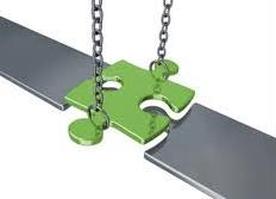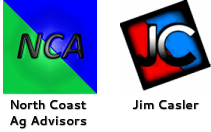| I strongly fear I may be dating myself with this image. Who knows what this is from? I am guessing that if you are under age 33, you don't have a clue. Surprise me with some comments. |
- Identifying responsibility and accountability for specific performance standards or decision-making for each member of your family business team is a key benefit.
- Job descriptions help management determine whether there is an actual need when contemplating bringing someone into the business, specifically a family member, but it applies to everyone. Instead of the traditional mindset that mirrors, “Hey, I’m family and I deserve a job.”, by matching specific duties with specific and required skill sets, that someone may or may not possess, this becomes the basis for adding or replacing staff. This is a much more effective way at managing your team…and your profits.
- Performance appraisals and reviews are sometimes also lacking in a family business. The sometimes awkward situation is eliminated when everyone is clear on what is expected. No surprises. Sure, it’s family…but it’s still a business.
- Job descriptions and designated areas of responsibility aid in succession planning by helping provide guidelines for what skills are needed so that the senior generation can “step-aside” for future management. The gaps that exist between the job description, job performance, skill sets and decision-making capabilities of the successor generation and those of the senior generation become the basis for personal development plans and training for the successor generation. It helps spell out what the successor generation needs to learn before being offered the opportunity to manage the entire operation. It also helps develop a timeline for management transition for clarity and understanding by everyone involved.
- What qualifications and skills are needed for each task/decision?
- Who performs these tasks now and in the future?
 You need a process for filling the gaps between the skills possessed by your team and the skills needed for the future.
You need a process for filling the gaps between the skills possessed by your team and the skills needed for the future. This exercise also helps show where gaps may exist. Oftentimes, no one is qualified to perform a certain task or area of decision making. So, it needs to be outsourced, filled internally or someone needs to get the training necessary to fill that role. As mentioned above, when looking toward the future and the “stepping aside” by senior management and the “stepping up” by a successor generation, presumably there are differences between the decision-making skills and areas of responsibility between the two generations, with the senior generation having much more responsibility and decision-making authority, along with the associated skills to do so. The gap between the roles each performs today and what you have determined needs to be performed in the future becomes your management transition plan.
It’s just a matter of taking the time to determine the roles, gaps and timelines for gaining the necessary skills for continued success of your family business. To best accomplish this, honest self-assessments, performance reviews, natural strengths and weaknesses and a system for helping flush this all out builds the basis for continuity in operations and accomplishes a formidable task of any succession planning. As you might imagine, we have some various forms and detailed exercise to help you with this specific task. If you’d like a copy, please email me and we can get out to you right away.
Until next time,


 RSS Feed
RSS Feed
